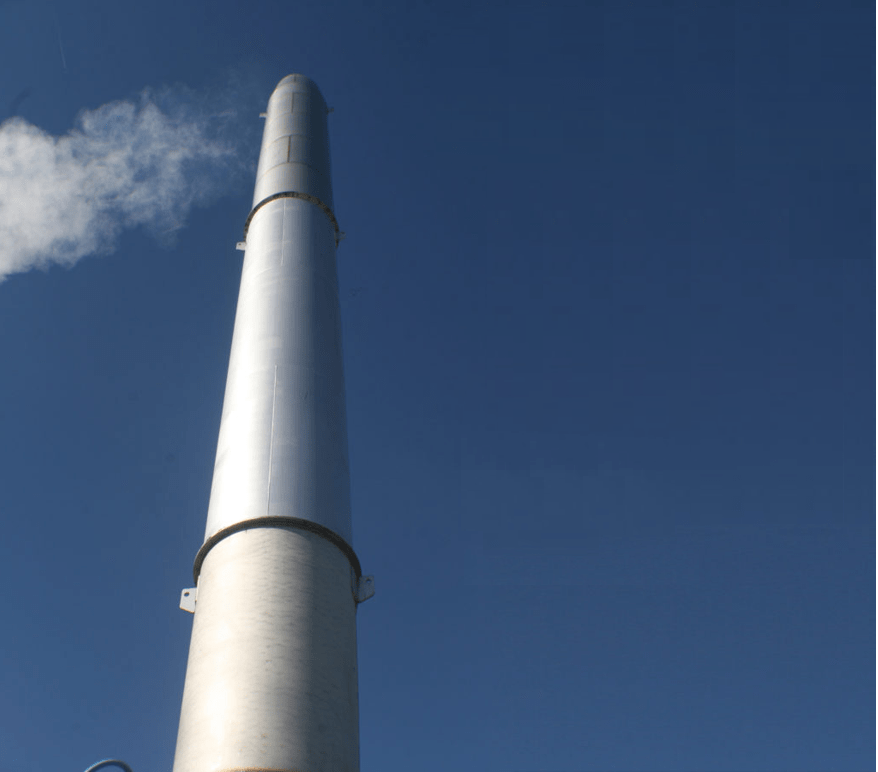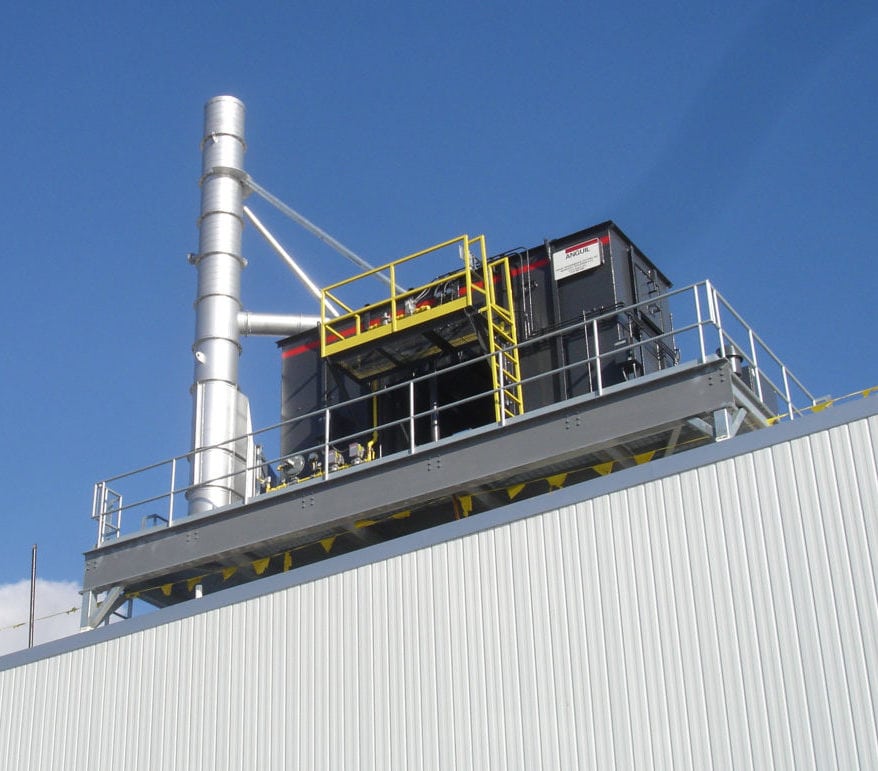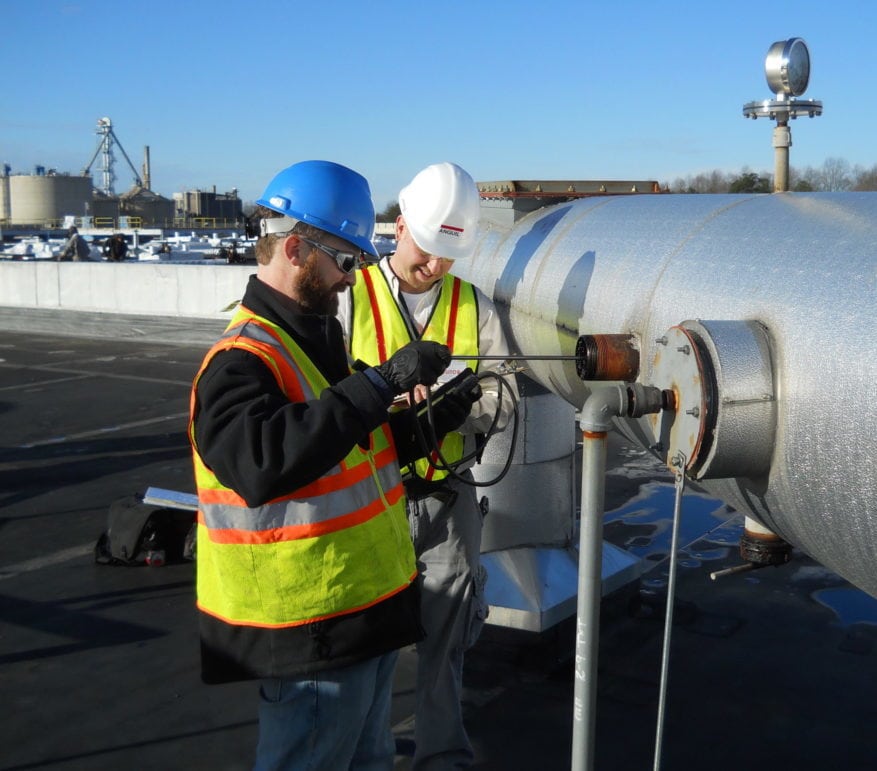This website uses cookies so that we can provide you with the best user experience possible. Cookie information is stored in your browser and performs functions such as recognising you when you return to our website and helping our team to understand which sections of the website you find most interesting and useful.
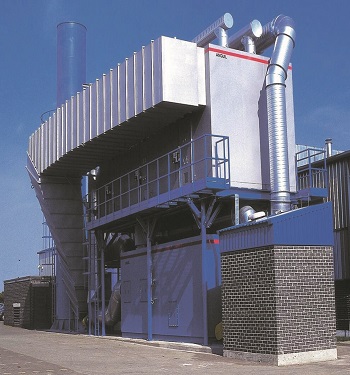 The Anguil Emission Concentrator is an adsorption system designed to concentrate large volume, low concentration process exhaust into a much smaller, higher concentrated air stream.
The Anguil Emission Concentrator is an adsorption system designed to concentrate large volume, low concentration process exhaust into a much smaller, higher concentrated air stream.
The greatly reduced flow with higher Volatile Organic Compound (VOC) concentration is sent to a thermal or catalytic oxidizer for VOC destruction. The destruction device can then be much smaller in size, significantly reducing capital cost. The resultant higher VOC concentration controlled in the smaller abatement equipment minimizes auxiliary fuel consumption.
-
Product Overview
Benefits of Anguil’s Emission Concentrators
- Largest flow capacity in the industry at over 120,000 SCFM (192,600 Nm3/hr) in a single rotor
- Reduces abatement equipment size by 90-95% of the original volume, providing dramatic capital and operating cost energy savings
Programmable Logic Controllers (PLCs): automate operation startup to shutdown, minimizing operator interface requirements. Remote telemetry enables the system’s operation to be viewed and altered via modem, reducing maintenance costs and downtime. Control rooms and various enclosure options available.
High-efficiency filter plenums.
Zeolite wheel options to prevent polymerization and minimize risk of fires.
Concentration ratios as high as 20:1.
99%+ Destruction Rate Efficiency (DRE), Regulatory Compliance Guaranteed”
Numerous options for source of desorption air heat.
Concentrator wheel, desorption air heat and oxidizer integrated as a single system, simplifying installation and control scheme.
Regenerative Thermal Oxidizers (RTO’s), Thermal Recuperative Oxidizers and Catalytic Recuperative Oxidizers can be supplied to treat the concentrated stream.
-
Air Flow Range & Efficiency
Air Flow Range
- 5,000-120,000 SCFM (8,025- 192,600 Nm3/hr) (Single Rotor)
Destruction & Removal Efficiency (DRE)
- 95-99% (Higher DRE can be reached with multiple rotors in series)
Programmable Logic Controllers (PLCs): automate operation startup to shutdown, minimizing operator interface requirements. Remote telemetry enables the system’s operation to be viewed and altered via modem, reducing maintenance costs and downtime. Control rooms and various enclosure options available.
High-efficiency filter plenums.
Zeolite wheel options to prevent polymerization and minimize risk of fires.
Concentration ratios as high as 20:1.
99%+ Destruction Rate Efficiency (DRE), Regulatory Compliance Guaranteed”
Numerous options for source of desorption air heat.
Concentrator wheel, desorption air heat and oxidizer integrated as a single system, simplifying installation and control scheme.
Regenerative Thermal Oxidizers (RTO’s), Thermal Recuperative Oxidizers and Catalytic Recuperative Oxidizers can be supplied to treat the concentrated stream.
-
Ideal Applications
Ideal Applications
- Large Volume, Low Concentration
- Low relative humidity, 90% max RH
- Exhaust of 100°F (38°C) or less
Programmable Logic Controllers (PLCs): automate operation startup to shutdown, minimizing operator interface requirements. Remote telemetry enables the system’s operation to be viewed and altered via modem, reducing maintenance costs and downtime. Control rooms and various enclosure options available.
High-efficiency filter plenums.
Zeolite wheel options to prevent polymerization and minimize risk of fires.
Concentration ratios as high as 20:1.
99%+ Destruction Rate Efficiency (DRE), Regulatory Compliance Guaranteed”
Numerous options for source of desorption air heat.
Concentrator wheel, desorption air heat and oxidizer integrated as a single system, simplifying installation and control scheme.
Regenerative Thermal Oxidizers (RTO’s), Thermal Recuperative Oxidizers and Catalytic Recuperative Oxidizers can be supplied to treat the concentrated stream.
ANGUIL EMISSION CONCENTRATOR FEATURES AND DESIGN OPTIONS
Features
- Completely shop assembled, pre-wired and test prior to shipment
- Zeolite adsorbent rotor minimizes risk of fires common to carbon systems with certain VOC/HAP emissions
- Low pressure drop, typically 3″-5″ W.C.
- Removal efficiencies of 95-99%
- Concentration ratios as high as 25:1
- Continuous adsorption of VOCs onto the rotor as opposed to a batch type adsorption vessels
- Concentrator rotor, desorption air heat and oxidizer integrated as a single system, simplifying installation and controls
- Over 120,000 SCFM (192,600 Nm3/hr) capacity with a single rotor system
- Robust Programmable Logic Controller (PLC) based controls with digital data recording, remote telemetry and various configuration options.
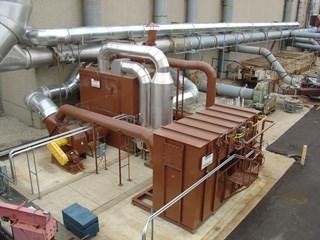 Options
Options
- Multiple rotors in series or parallel for even higher DRE or higher airflows
- Various zeolite substrate options to prevent polymerization
- High-efficiency filter plenums to protect the adsorbent from process particulate exhaust
- Numerous options for desorption air heat
- Fully-integrated concentrator – oxidizer systems, including common controls stream
Operating Cost Reduction Strategies
- Primary or secondary heat and Energy Recovery Solutions
- Oxidizer Service and Preventive Maintenance Evaluations (PME)
How Do Emission Concentrators Work?
The high volume, low concentration airstream passes through a rotor concentrator where VOC emissions are stripped from the air and adsorbed onto the zeolite. The majority (approximately 90-95% of the total air volume) of this clean air is then exhausted to atmosphere. A small portion of the air stream (approximately 5-10% of the total air volume) is heated to an elevated temperature to be used as desorption air.
The concentrator rotor spins continuously at a very slow rate, transporting adsorbed pollutants into a desorption section. In the desorption section, the VOCs are desorbed or released from the adsorptive media with the low volume heated airstream. This low volume, high VOC-laden air is then processed by an oxidizer.
The concentrator with integrated oxidizer is often the most cost effective technology for processing high volume, low concentration streams. While the capital cost of a system is competitive with other technologies, the true savings is realized in reduced operating costs. When coupled with a concentrator, an oxidizer will operate with little to no natural gas consumption. At higher concentration values, it even has sufficient “free energy” to provide desorption energy for the concentrator.


